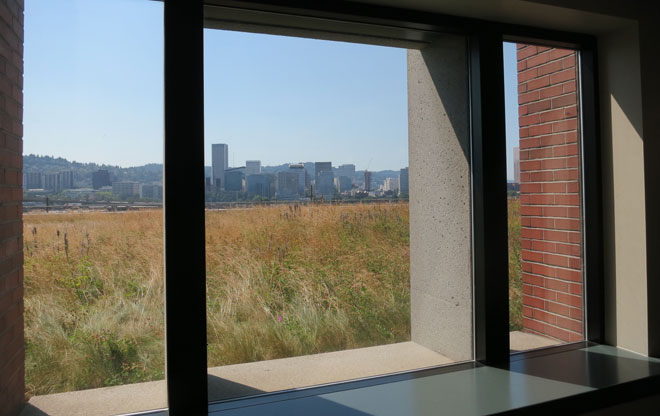
View from the Lobby
Located on the fifth floor of the seven-story Multnomah Co. Building, the Amy Joslin Memorial Eco-Roof is initially viewed from within the elevator lobby.
Image: Carol Mayer-Reed
Honoring Amy Joslin
The green roof and outdoor deck are named in honor of Amy Joslin, a charismatic leader who championed sustainability and development of the eco-roof.
Image: Carol Mayer-Reed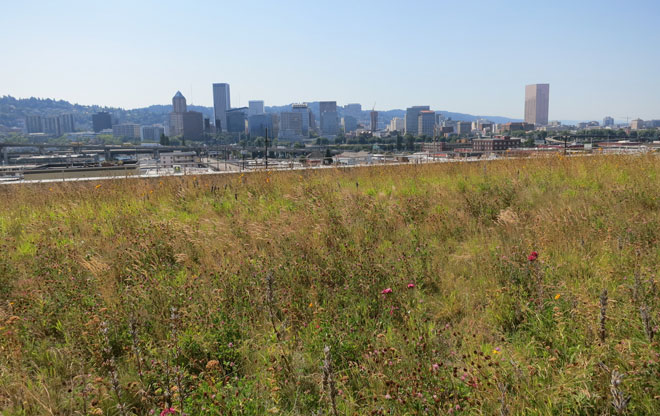
Rooftop Meadow
The green roof is oriented towards downtown and the West Hills. Here, the meadow is in the foreground. Green roofs absorb and filter the water that falls on them. In addition, they provide habitat for a range of insects and birds.
Image: Carol Mayer-Reed
A Roof for All Seasons
The meadow landscape offers visual interest in all seasons. Plants include a mix of grasses, clover, perennials, and succulents suited to a thin soil section. In some areas of thicker soil, woody shrubs such as lavender and rosemary are also grown.
Image: Carol Mayer-Reed
Interpretation
Interpretive materials explain the contributions of green roofs for improving water quality. This eco-roof is an “extensive” green roof with a shallow soil depth of six inches or less. It's significantly lighter in weight than an “intensive” green roof, using a deeper soil section.
Image: Carol Mayer-Reed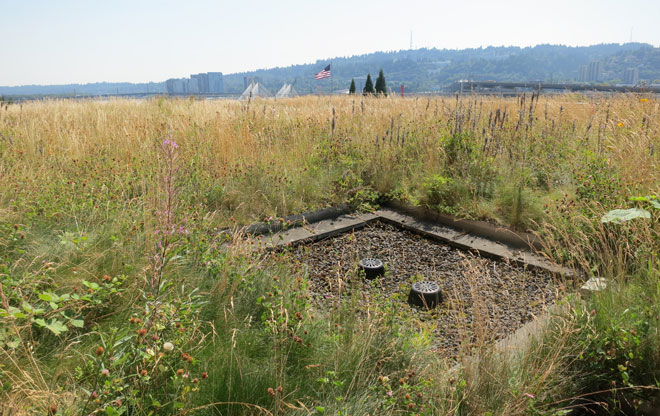
Green Roofs Insulate
Green roofs protect the roof membrane and provide a layer of insulation for the building. Roof drains near the deck allow visitors to see how the system works. The soil section consists of 6 inches of well-drained, lightweight soil over a waterproof membrane and protection board.
Image: Carol Mayer-Reed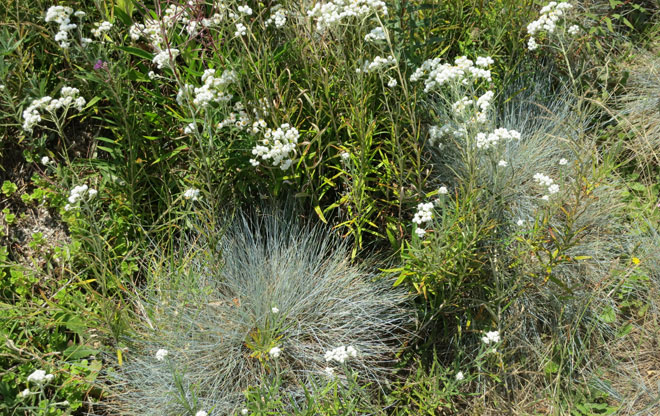
Native Plants
Pearly everlasting and sheep fescue, both native plants of the region, thrive on the green roof.
Image: Carol Mayer-Reed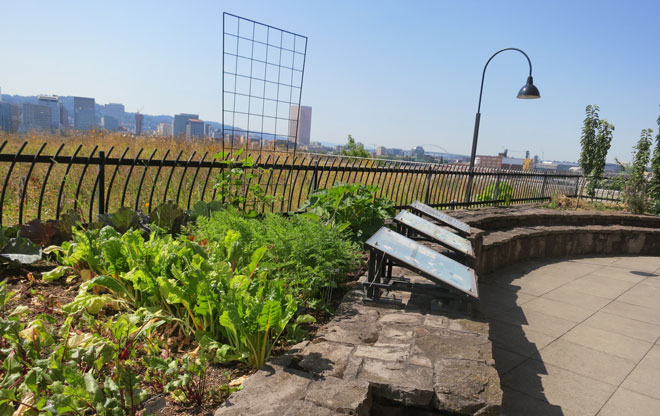
Rooftop Garden
County employees tend a small vegetable garden in a raised stone bed. Here, lettuces, tomatoes, beets, herbs, and even dwarf fruit trees are cultivated on the rooftop.
Image: Carol Mayer-Reed
Green Wall Experiment
A framed panel of green wall has been recently added to the terrace, continuing the process of experimentation with designed nature on the roof. Sun-worshiping tomatoes, herbs, and hot peppers seem to be particularly successful.
Image: Carol Mayer-Reed